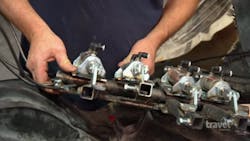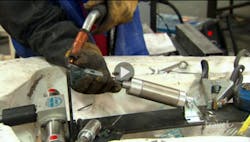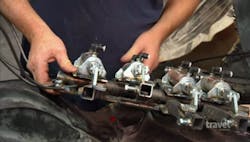Halloween has become big business. Candy and other treats and simple costumes are still a big part of the festivities, but masks and costumes have become more detailed, realistic, and gory. You can even buy animated figures that use motion to bring ghouls, zombies, and monsters to life.
Entry-level animated figures use a few axes of motion using electromechanical drives. But the pros make figures with multiple movements, and in many cases, there just isn't enough room for big and heavy electromechanical drives.
Enter pneumatics, where a compressor can but tucked away out of sight (and earshot), and pneumatic cylinders and rotary actuators generate motion from within cramped quarters.
Here's an example showing the pneumatic innards from a show on the Travel Channel. It shows how components from Bimba Mfg. bring lifelike motion to carefully crafted figures.
About the Author
Alan Hitchcox Blog
Editor in Chief
Alan joined Hydraulics & Pneumatics in 1987 with experience as a technical magazine editor and in industrial sales. He graduated with a BS in engineering technology from Franklin University and has also worked as a mechanic and service coordinator. He has taken technical courses in fluid power and electronic and digital control at the Milwaukee School of Engineering and the University of Wisconsin and has served on numerous industry committees.

Leaders relevant to this article:


